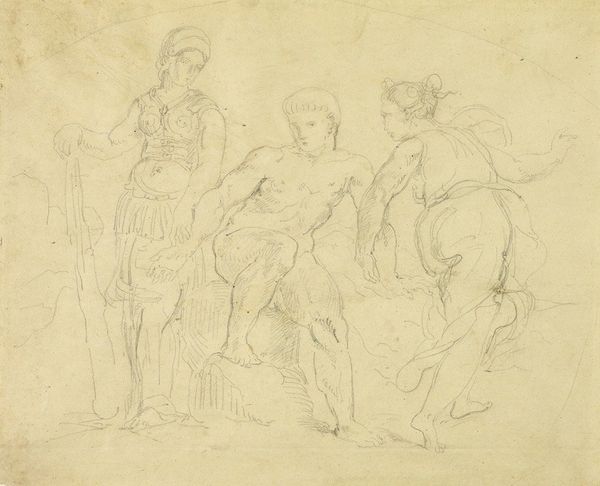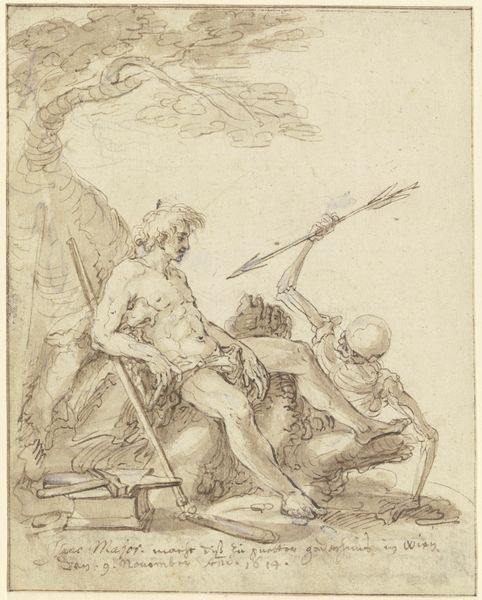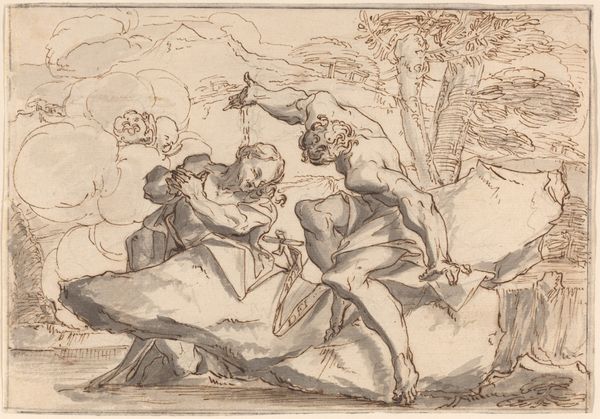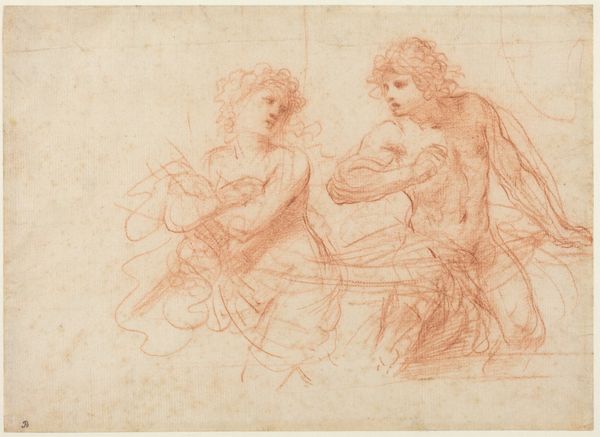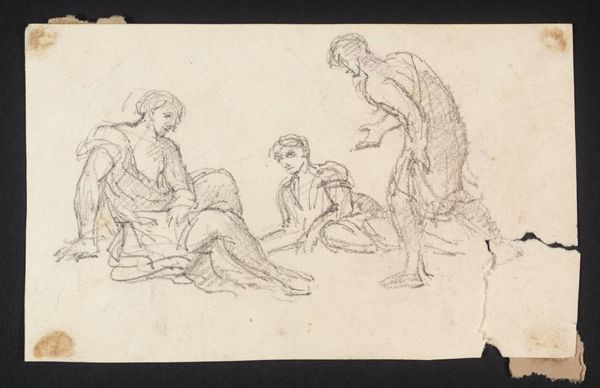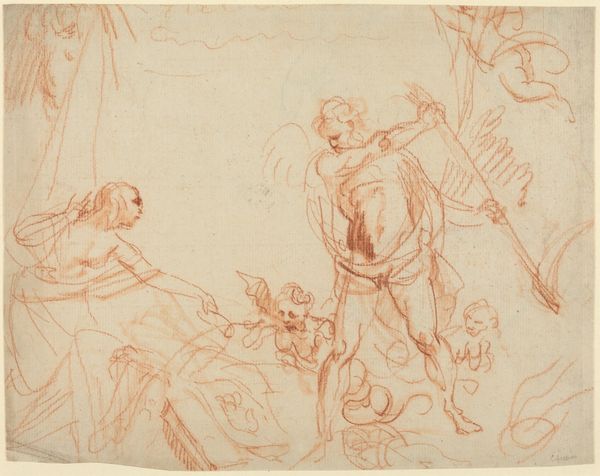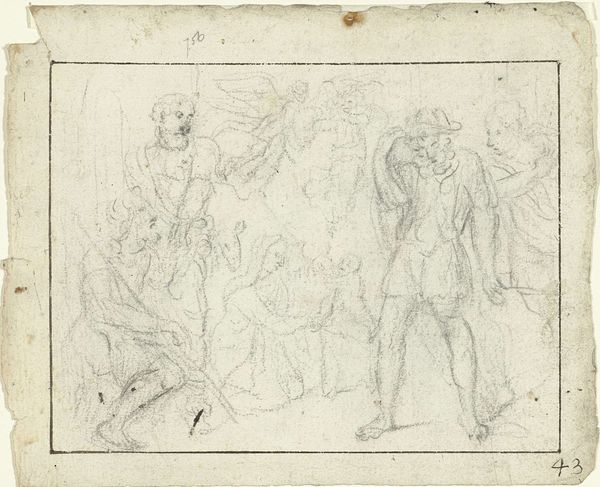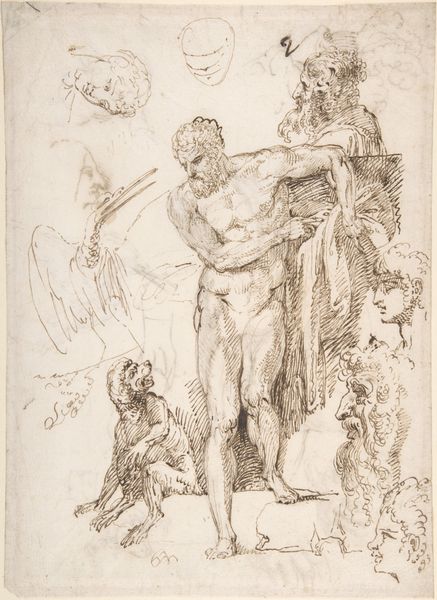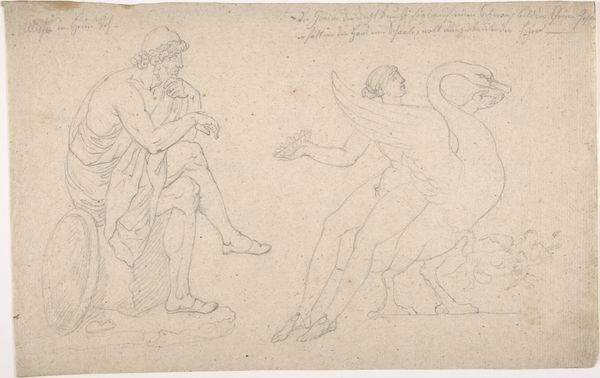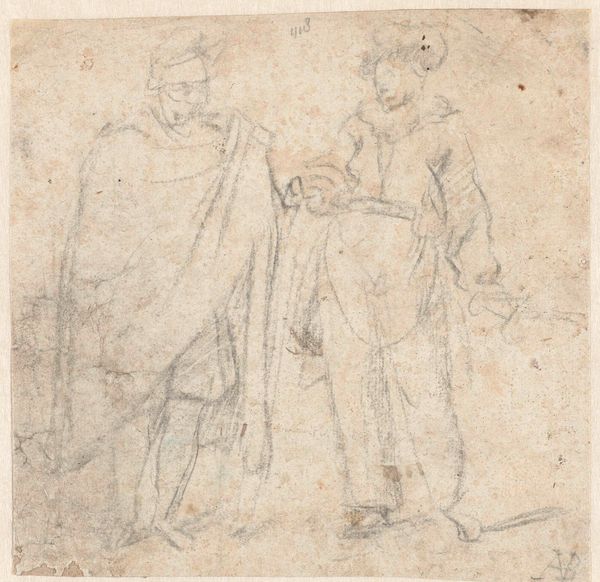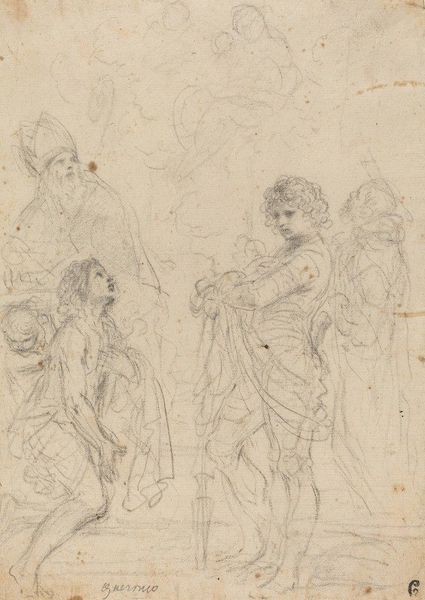
Studies van twee staande figuren, een zittende man en een been 1795 - 1810
0:00
0:00
#
light pencil work
#
ink drawing
#
pen sketch
#
pencil sketch
#
personal sketchbook
#
ink drawing experimentation
#
pen-ink sketch
#
sketchbook drawing
#
storyboard and sketchbook work
#
sketchbook art
Dimensions: height 187 mm, width 199 mm
Copyright: Rijks Museum: Open Domain
Curator: Let's discuss "Studies van twee staande figuren, een zittende man en een been" by Johann Heinrich Füssli, dating from 1795 to 1810, here at the Rijksmuseum. I find myself drawn to the dynamism implied within this pen and ink sketch. What stands out to you? Editor: I’m immediately struck by the contrast in the poses; one figure stands tall with what look like wings, another appears almost burdened, sitting and hunched over. How would you interpret the spatial relationship of these figures, considering the minimalist style of the sketch? Curator: Certainly, one can initially consider how the formal relationships are constructed here. Füssli arranges his figures within a relatively shallow space. It's tempting to see it in terms of contrasts of stasis versus kinesis, but note that all the figures appear constrained by their outlines, the graphic tension being heightened by a relatively closed composition. To what extent might this be viewed as self-contained, autonomous? Editor: I see what you mean about the graphic tension. Is it then the starkness of the lines themselves that gives the image its expressive force, rather than any kind of narrative? Curator: Precisely! Füssli exploits line not as contour only, but as a modulator of the depicted forms. Line becomes both descriptive and expressive. Can you think of any possible implications? Editor: Well, the exaggerated musculature and the dramatic poses make me think that Füssli was perhaps more interested in exploring idealized human forms and emotions than depicting a literal scene. Curator: An astute observation! The formal elements of line and form are employed to project states of being, making the viewer focus on aesthetic and conceptual frameworks, such as ideals and emotions, over pure representation. How does this reading change your perspective? Editor: It clarifies why the sketch feels so modern. Focusing on form over explicit narrative allows the drawing to communicate in a powerful, almost abstract way. It’s less about “what” they are doing and more about “how” they feel. Curator: Exactly! Understanding how these elements interact enriches our appreciation. It highlights that the visual construction becomes paramount in interpreting the work. Editor: Thank you. I hadn’t thought of it so abstractly before. It’s fascinating how analyzing the line work alone can reveal so much.
Comments
No comments
Be the first to comment and join the conversation on the ultimate creative platform.
